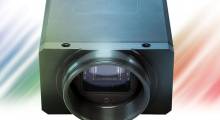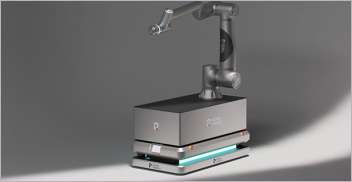OMNIVISION, a California-based global developer of semiconductor offerings, recently launched three new image sensors for machine vision applications.
The company announced two new CMOS global shutter (GS) image sensors for machine vision applications. OMNIVISION has also created a new Machine Vision Unit, which will focus on creating innovative offerings for industrial automation, robotics, logistics barcode scanners and intelligent transportation systems (ITS).
OMNIVISION also announced the new OG09A10 CMOS GS sensor - the company’s first large-format GS sensor for factory automation and ITS. The large-pixel, 3.45 µm backside-illuminated (BSI) stacked global shutter sensor, with its low readout noise and high quantum efficiency (QE), delivers excellent image quality, making it ideal for machine vision applications that require the ability to capture clear images of high-speed moving objects.
CMOS global shutter sensor details
OMNIVISION’s new GS sensors feature 2.2-micron (µm) BSI pixel for high resolution in a compact design. The high-resolution, small-format GS sensors provide higher shutter with the ability to capture high-speed moving objects clearly and accurately at high frame rates. They also feature high sensitivity, low noise and enhanced near-infrared (NIR) QE for low-light performance.
Compared to the previous-generation 2.5µm frontside-illuminated (FSI) GS sensors, the 2.2µm BSI GS sensors can achieve 1.08x sensitivity with an F2.0 lens and 2.16x sensitivity with an F1.4 lens. The new OG05B1B is a 5-megapixel (MP) resolution CMOS monochrome GS sensor in a 1/2.53-inch optical format (OF). The new OG01H1B is a 1.5MP resolution CMOS monochrome GS sensor in a 1/4.51-inch OF.
“We see a huge demand in the machine vision market for 3D cameras and CMOS image sensors,” said Michael Wu, senior vice president, global sales and marketing, OMNIVISION. “With our strong technological backbone in Nyxel, BSI and GS technology, we bring great innovation to the industry. Our new Machine Vision Unit will focus on understanding our customers’ needs and product roadmaps and address them with novel vision solutions.”
Both image sensors feature OMNIVISION’s Nyxel NIR technology, which boosts QE to 700-1050nm, enabling the capture of brighter images from farther away; PureCelPlus-S stacked-die architecture for image sensor performance; and CSP package technology for the smallest possible dimensions.
Key features of the OG05B1B GS image sensor:
- 2592 x 1944 resolution (5MP)
- Fast frame rate of 60fps
- High shutter efficiency of 106 dB
- Interface: 4-lane MIPI & DVP
- External trigger snapshot mode enabling back-end exposure control for improved accuracy
- Nyxel boosting QE from 700 to 1050nm, 58% QE @850nm

Key features of the OG01H1B GS image sensor:
- 1440 x 1080 resolution (1.5MP)
- Fast frame rate of 120fps
- High shutter efficiency of 106 dB
- Interface: 4-lane MIPI & DVP
- External trigger snapshot mode enabling back-end exposure control for improved accuracy
- Nyxel boosting QE from 700 to 1050nm, 58% QE @850nm

OG09A1B mono GS image sensor details
The OG09A10 is a 9-MP GS sensor with a 1-inch optical format. The sensor’s 3.45 µm pixel is based on OMNIVISION’s patented PureCelPlus-S stacked-die architecture for image sensor performance. The OG09A features Nyxel NIR technology for crisp, clear images in low-light conditions. Dual Conversion Gain High Dynamic Range (DCG HDR) technology further extends the GS image sensor’s dynamic range capabilities and reproduces artifact–free, low-noise images in challenging lighting conditions.
“Charge-coupled device (CCD) image sensors are being replaced with CMOS image sensors, resulting in volume growth of the machine vision market,” said Richard Liu, technology and market analyst for the photonics, sensing & display division of Yole Group. “CMOS greatly simplifies the complexity of industrial cameras. Compact cameras, including smart cameras, can more easily be developed and are more suitable for use in various industrial environments. With this being the case, Yole expects the global industrial camera market to grow from $3.6B in 2020 to $5.5B in 2026, at a 7.4% compound annual growth rate (CAGR)1.”
Key features of the new OG09A1B mono GS image sensor include:
- High shutter efficiency of 106 dB
- 90% QE response
- 76 dB dynamic range with DCG HDR support
- High frame rate of 60 fps at 12-bit (8x8 Region of Interest (ROI) reduces data bandwidth at even higher frame rates)
- 4096 x 2160 resolution
- External trigger mode enabling backend exposure control for improved accuracy
- Support for 16-lane LVDS interface to 1.05 Gbps

Want to learn more about machine vision? This article was featured in the August 2024 Robotics 24/7 Special Focus Issue titled “Machine vision to increase robot precision.”
Article topics
Email Sign Up

















